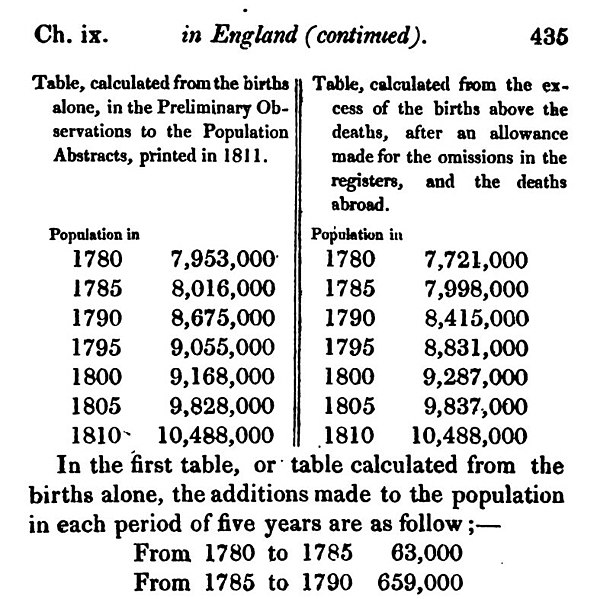Human overpopulation describes a concern that human populations may become too large to be sustained by their environment or resources in the long term. The topic is usually discussed in the context of world population, though it may concern individual nations, regions, and cities.
Table of population growth in England 1780–1810 in An Essay on the Principle of Population (1826) by Thomas Malthus, which would go on to be an influential text on Malthusianism
American biologist Paul R. Ehrlich generated renewed interest in the topic of overpopulation with The Population Bomb (1968).
A family planning placard in Ethiopia. It depicts negative effects of having more children than people can care for.
In environmental science, a population "overshoots" its local carrying capacity — the capacity of the biome to feed and sustain that population — when that population has not only begun to outstrip its food supply in excess of regeneration, but actually shot past that point, setting up a potentially catastrophic crash of that feeder population once its food populations have been consumed completely. Overshoot can apply to human overpopulation as well as other animal populations: any life-form that consumes others to sustain itself.
Greater Los Angeles lies on a coastal mediterranean savannah with a small watershed that is able to support at most one million people on its own water; as of 2015, the area has a population of over 18 million. Researchers predict that similar cases of resource scarcity will grow more common as the world population increases.
Illegal slash-and-burn agriculture in Madagascar, 2010
A government sign in China: "For a prosperous, powerful nation and a happy family, please practice family planning."






